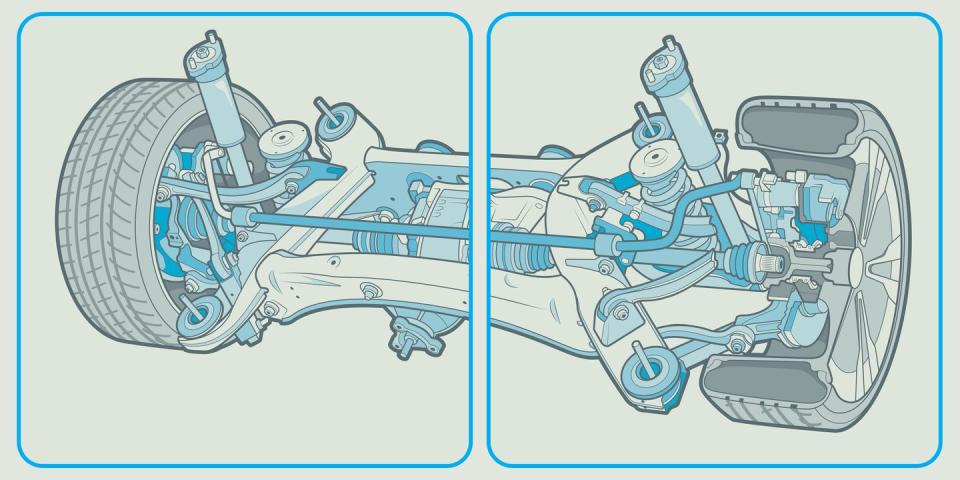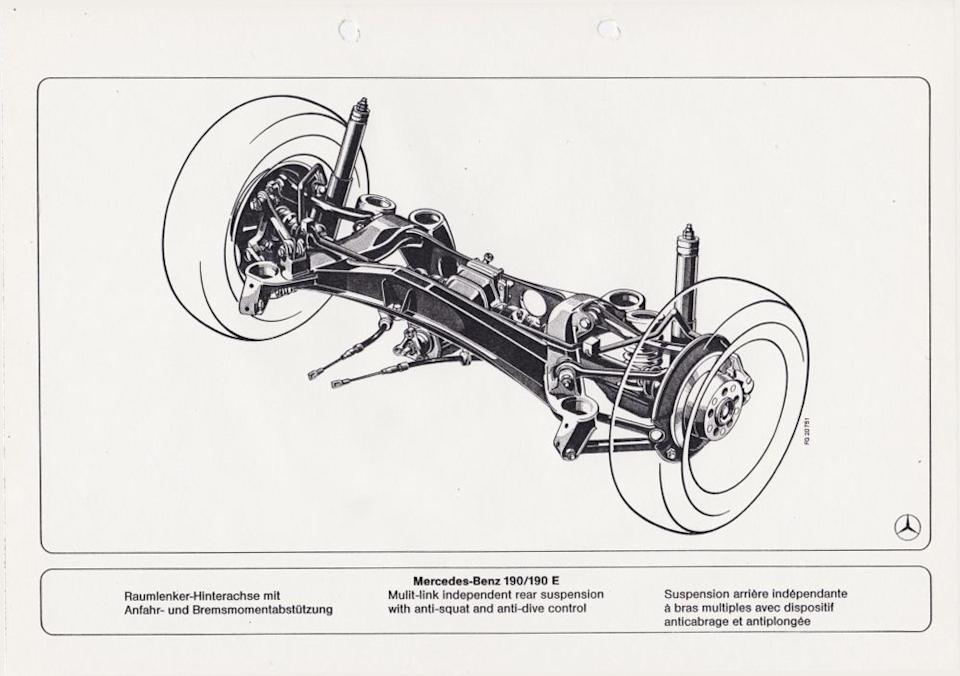Why Is Multi-Link Rear Suspension So Popular?

"Hearst Magazines and Yahoo may earn commission or revenue on some items through these links."
The design brief for the Mercedes-Benz 190 was simple: Build a Mercedes, only smaller. The W201, as it was known internally, was Mercedes-Benz's response to the oil crises of the Seventies and subsequent Corporate Average Fuel Economy (CAFE) standards in the company's largest export market, the United States.
This car was designed during a golden era for Mercedes, when development costs were seemingly of no object. By today's standards, the 190 seems like a fairly conventional sedan, yet when it launched in 1982, it was a revolution. Among its many innovations was its rear suspension. This was the first car with multi-link rear suspension, consisting of individual upper and lower control arms that resemble wishbones and a camber control arm. The setup was lightweight and compact, and helped give the 190 more grip than the contemporary BMW 3-Series—which used snap-oversteer-inducing semi-trailing arm rear suspension—while maintaining excellent ride quality.
In the forty-plus years since the 190 debuted, many cars have employed multi-link rear suspension. This is purely anecdotal, but as a web writer for years, I've written up so many new-car stories that feature a sentence like "a [INSERT-SUSPENSION-OF-CHOICE-HERE] front paired with a multi-link setup at the back," and that's true for my colleagues too. So the rear suspension of the 190 was a cipher, right? Yes and no. It was a fabulous design, conceptually similar to what Mercedes uses to this day, but there are a lot of different types of multi-link suspension.
Let's review the basics here. To reiterate what I wrote in my article on double-wishbone vs. MacPherson strut suspension, the job of any independent suspension is to control five directions of tire motion: bump/jounce, rebound/droop, lateral, longitudinal, and camber. Each motion type requires its own suspension link, but these "links" don't have to be discrete parts. For example, a wishbone is two links joined together to create one part, while in a MacPherson strut suspension, you have a virtual upper link created by the slider mechanism of the strut itself.

The term "multi-link suspension" can refer to a number of different suspension designs, all of which include at least three lateral links. While the classic Mercedes multi-link design consists of five discrete links, there are other multi-link setups that use a combination of upper or lower wishbones, plus three individual links. The C4 Corvette, which debuted a few months after the 190, had a multi-link rear axle, too, though this suspension consisted of two trailing arms, a toe arm, a camber link, and the half-shaft. Race Car Vehicle Dynamics, one of the best books on vehicle dynamics for far more than just race cars, also describes multi-link suspension using H-arms, essentially a wishbone with an integrated toe link. So multi-link is popular in large part because the term "multi-link" is vague. Yet that doesn't fully explain why so many automakers use suspension designs belonging to the larger multi-link family.
A double-wishbone suspension is simple in concept, and arguably, it's still the design of choice for performance cars. Yet the wishbones are tasked with dealing with both up-and-down and fore-and-aft motion. This makes it hard, though certainly not impossible, to separate out ride and handling characteristics. By separating suspension links, engineers are given more tuning freedom than with any other suspension type, more control of ride and handling individually.From a parts perspective, a multi-link suspension is more complex than double wishbones, but that’s it’s greatest asset. There are more things for engineers to tweak.

 Yahoo Autos
Yahoo Autos 